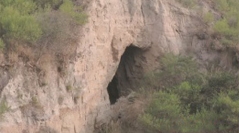

 Comptes Rendus Palevol
15 (3-4) - Pages 379-391
Comptes Rendus Palevol
15 (3-4) - Pages 379-391The Masol paleonto-archeological site is located in the Siwalik Frontal Range in the north of Chandigarh (Punjab, NW India). Many fossils and stone tools can be observed in the colluviums that overlap the present topography constituted by Late Pliocene continental sediments. The Masol paleonto-archeological site is located in the center of a trenched anticline compatible with the direction of plate convergence between India and Eurasia. Erosion processes are very actives and efficient in the area. Around 80 m of vertical erosion occurred in the Patiali Rao valley and regressive erosion incised the Siwalik Hills for ∼12 km. At least two levels of fluvial terraces are visible in the Patiali Rao valley and laterally apart the Pichhli River. River bank erosion, gullies, collapses, cavities, regressive erosion, landslides and in situ disaggregation have been observed and are responsible of the significant excavation of the anticline. Substrate composed of sand, sandstone and silt is very erodible in case of heavy rain. Slope destabilizations by seasonal monsoon are responsible of a large part of the colluviums overlapping the present slopes. Some colluviums could be due also to in situ disaggregation of sandstone formations. Due to the very active erosion and to their position on the topography, we believe that these colluviums are very recent.
Fluvial terraces, Erosion, Rainfall, Anticline, Colluviums, River